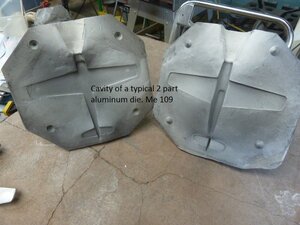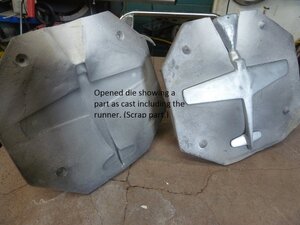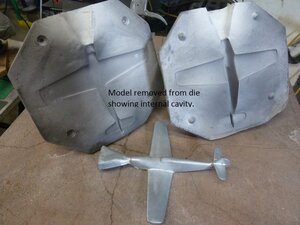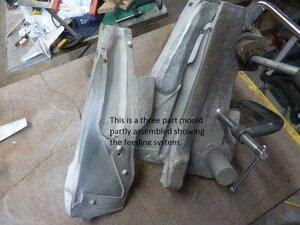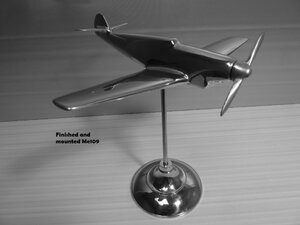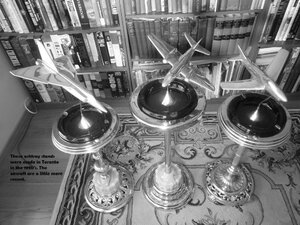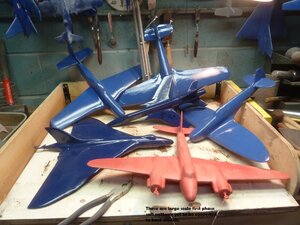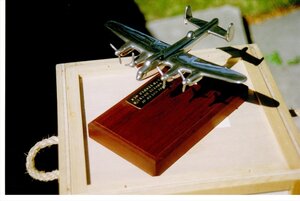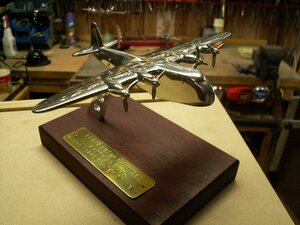Oldarm
John
First, thank you so much for the warm reception you have given me as a new guy on the block and also for the sensible questions posed. I hope I have been able to answer them in a like fashion.
I have taken a few snaps today of the basic tooling I make which I think will give a better idea of the form it takes. As I say, it is hand manipulated and locked by means of "C" clamps as per the photo. The tooling is inherently light being made from aluminum, also seen in one of the photographs. Also attached is a photo of a three part tool as opposed to the simple structure of the two part die. Note also a few images of new types at various stages of patternmaking. The red and blue models are prime patterns before I turn them into aluminum masters.
I have taken a few snaps today of the basic tooling I make which I think will give a better idea of the form it takes. As I say, it is hand manipulated and locked by means of "C" clamps as per the photo. The tooling is inherently light being made from aluminum, also seen in one of the photographs. Also attached is a photo of a three part tool as opposed to the simple structure of the two part die. Note also a few images of new types at various stages of patternmaking. The red and blue models are prime patterns before I turn them into aluminum masters.

